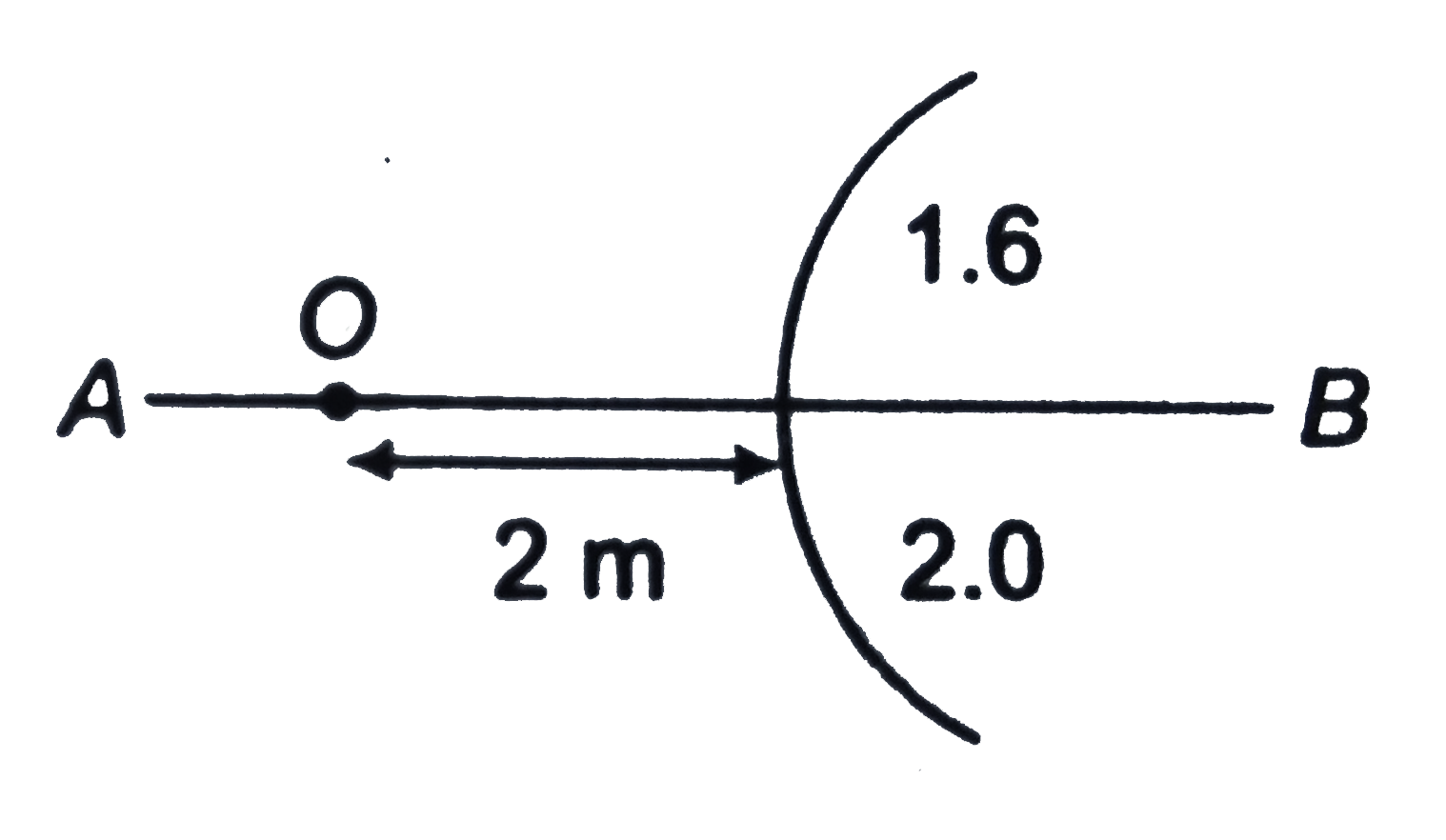In the figure, a point object O is placed in air. A spherical boundry separates two media of radius of curvature 1.0m. AB is principal axis. The separation between the images formed due to refraction at spherical surface is

12m
20m
14m
10m
The correct Answer is:A
1.6v1−1.0−2=1.6−1.0+10
rArr v1=16cm
2.0v2−1.0−2=2.0−1.0+10
∴v2=4m
I2I2=v1−v2
=12cm
Topper's Solved these Questions
- REFRACTION OF LIGHTBOOK - DC PANDEYCHAPTER - REFRACTION OF LIGHTEXERCISE - Single Correct Option
3 Videos
- REFRACTION OF LIGHTBOOK - DC PANDEYCHAPTER - REFRACTION OF LIGHTEXERCISE - more than one correct option
1 Videos
- REFRACTION OF LIGHTBOOK - DC PANDEYCHAPTER - REFRACTION OF LIGHTEXERCISE - Subjective Questions
8 Videos
- REFLECTION OF LIGHTBOOK - DC PANDEYCHAPTER - REFLECTION OF LIGHTEXERCISE - Subjective
9 Videos
- SEMICONDUCTORSBOOK - DC PANDEYCHAPTER - SEMICONDUCTORSEXERCISE - Subjective
12 Videos
Similar Questions
In the figure shown, a point object O is plaiced in air. A spherical boundary of radius of curvature 1.0(~m) separates various media. AB is the principal axis. The retive index above AB is 1.6 and below AB is 2.0. The separation(in m ) between the images formed due to retion at spherical surface is
'(##CEN_KSR_PHY_JEE_C26_E01_033_Q15##)'
View SolutionAn object is placed 10cm away form a glass piecwe (n=1.5) of length 20cm bounded by spherical surfaces of radii of curvaure 10cm. Find the position of final image formed after two refractions at the spherical surfaces.

View Solution
Knowledge Check
In Figure, a point object O is placed in air. A spherical boundary separates two media. Ab is the principall axis. The refractive index above AB is 1.6 and below AB is 2.0. The separation between the images formed due to refraction at a the spherical surface is (assume the radius of curvature (R) to be 1 unit)
 A12mB20mC14mD10m
A12mB20mC14mD10mIn the figure shown , a point object O is placed in air on the principal axis. The radius of curvature of the spherical surfaces is 60cm. I is the final image formed after all reflections and refractions.
 AIf x=120cm, then I is formed on O for any value of yBIf x=240cm, then I is formed on O for any value of y=360cmCIf x=240cm, then I is formed on O for any value of yDNone of these
AIf x=120cm, then I is formed on O for any value of yBIf x=240cm, then I is formed on O for any value of y=360cmCIf x=240cm, then I is formed on O for any value of yDNone of theseA point object O is placed in front of a glass rod having spherical end of radius of curvature 30cm. The image would be formed at
 A30 cm lefBinfinityC1 cm to the rightD18 cm to the left
A30 cm lefBinfinityC1 cm to the rightD18 cm to the left
A small point objects is placed in air at a distance of 60cm from a convex spherical refractive surface of μ=1.5. If radius of curvature of spherical surface is 25m, calculate the position of the image and the power of the refracting surface.
View SolutionA point object O is placed in front of a glass rod having spherical end of radius of curvature 30cm. The image would be formed at

View SolutionTwo cancave refracting surfacwe of equal radii fo curvature face each other in air as shown in figure. A point object O is placed midway between the centre and one of the poles. Then the separation between the images of O formed by each refracting surface is

View SolutionAn object 5 cm tall is placed 1 m from a concave spherical mirror which has a radius of curvature of 20 cm. The size of the image is
View SolutionA parallel narrow beam of light is incident on the surface of a transparent hemisphere of radius R and refractive index μ=1.5 as shown. The position of the image formed by refraction at the image formed by refraction at the spherical surface only as

View Solution
